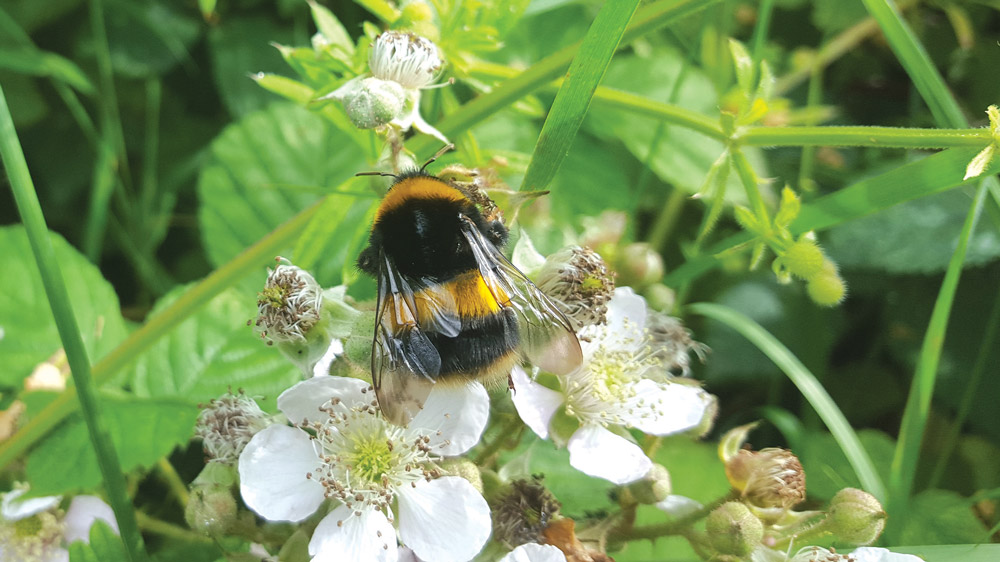
Nature on our doorsteps: Warmer winter weather
We have had an unusually mild, or even a warm, start to this year’s winter season, with both daytime and night-time temperatures being above average for this time of the year.
This may certainly benefit many of us who dread the approach of the winter chill and the costs of keeping warm. In nature, however, this unusual seasonal weather is very unsettling.
Wildflowers, or weeds, often send out a late season flower or two. Some garden plants, however, are showing new flowering buds.
If colder weather comes, these plants may not survive as they will have wasted important energy in trying to flower unsuccessfully.
For colony insects like bumblebees and wasps, summertime hives die away once the new queens leave the nest in early autumn. These queens build up their energy reserves before the cold weather arrives, at which time they become dormant in order to survive the chill.

Late-flowering Blackberry can provide food for Buff-tailed Bumblebees in early winter
What happens, however, if the cold weather does not come?
The Buff-tailed Bumblebee appears to have taken advantage of warming weather patterns by continuing to form new colonies into winter.
They survive by feeding on the many new types of winter-flowering garden plants and shrubs that we are growing in our gardens and parks.
Also, because there are fewer other insects around in winter, this bumblebee has very little competition, and some winter hives appear to survive.
They are very vulnerable, however. A sudden prolonged drop to more normal winter temperatures can have dire consequences, destroying the entire colony which is meant to provide new queens for next year.
Adapting to change can be a risky business, and it remains to be seen if plants, insects and birds can respond to the changing climate by trying to vary their normal lifecycles.

